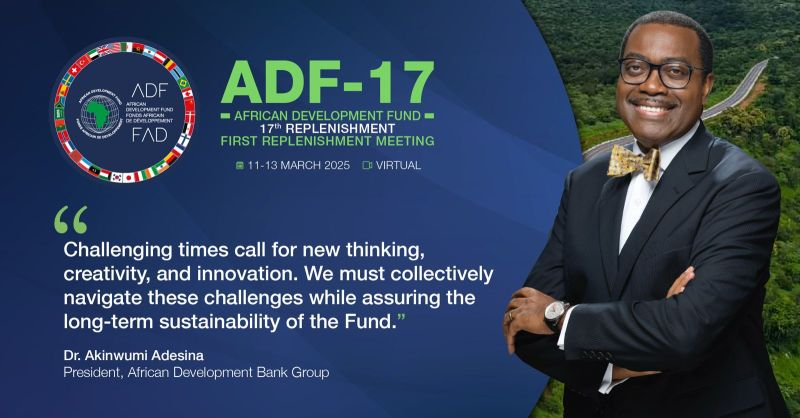In Africa, young farmers take days to get their crops to the nearest market. The roads are rough, and trucks rarely come. Today, thanks to a new paved road, their trips take just a few hours. They can sell more, earn more, and even send her children to school.
This change didn’t happen by chance. It was funded by the African Development Fund (ADF), money set aside to help some of Africa’s poorest countries grow and improve lives. Now, the fund is asking for more support in what’s called the 17th replenishment (ADF-17). And this moment is more important than ever.
Why This Matters Right Now
Africa is growing fast in people, business, and opportunity. But many countries still struggle with things like roads, electricity, and clean water. The ADF focuses on 37 African countries that have the biggest challenges but also great potential.
The problem? Global financial support is shrinking, even as needs are growing. In 2025, aid to Africa could drop by as much as 17%. That means the money ADF raises now will decide how much can get done in the years ahead.

What ADF-17 Could Do
If fully funded, ADF-17 could:
- Build trade routes that connect farmers and small businesses to bigger markets.
- Expand electricity access so homes, schools, and businesses can grow.
- Train millions of young people for jobs in farming, technology, and manufacturing.
- Support peace and stability in countries recovering from conflict.
And ADF has proven it works. In recent years, it has given 48 million people clean water, improved food security for 90 million people, and connected 18 million to electricity.
In this webinar of the African Transformation Briefing, ACET led a high-level dialogue on the future of the African Development Fund (ADF) and its critical role in financing Africa’s transformation.
Africa Helping Itself
Here’s something new: African countries themselves are now contributing to the fund. Last time, 6 countries pitched in. This time, 13 countries are stepping up. It’s a sign that Africa is taking charge of its development, not just waiting for outside help.
The African Continental Free Trade Area (AfCFTA) is Africa’s big plan to make it easier to trade between countries. But it can’t happen without better roads, ports, and power grids. ADF-17 will help build these connections, especially in countries that risk being left behind.
What Happens If We Don’t Act
If ADF-17 doesn’t get enough funding, many projects will stall. That means more farmers without access to markets, more homes without power, and more young people without jobs. And for fragile countries, it could mean slipping back into crisis.
ADF-17 is not just charity; it’s an investment in Africa’s future. We all have a role to play:
- Governments can contribute funds.
- Businesses can invest where infrastructure is growing.
- Communities can share stories and push for support.
The message is clear: when Africa invests in itself, the results are powerful. Now is the time to back ADF-17 so that millions more can have the chance to learn, work, and thrive.
You can download additional resources on ADF-17 below:
African Development Fund Making the Case for a Strong Replenishment by Valerie Dabady - Manager, Resource Mobilization and Partnerships Department African Development Bank Group
Talking Points on the African Development Fund’s 17th Replenishment